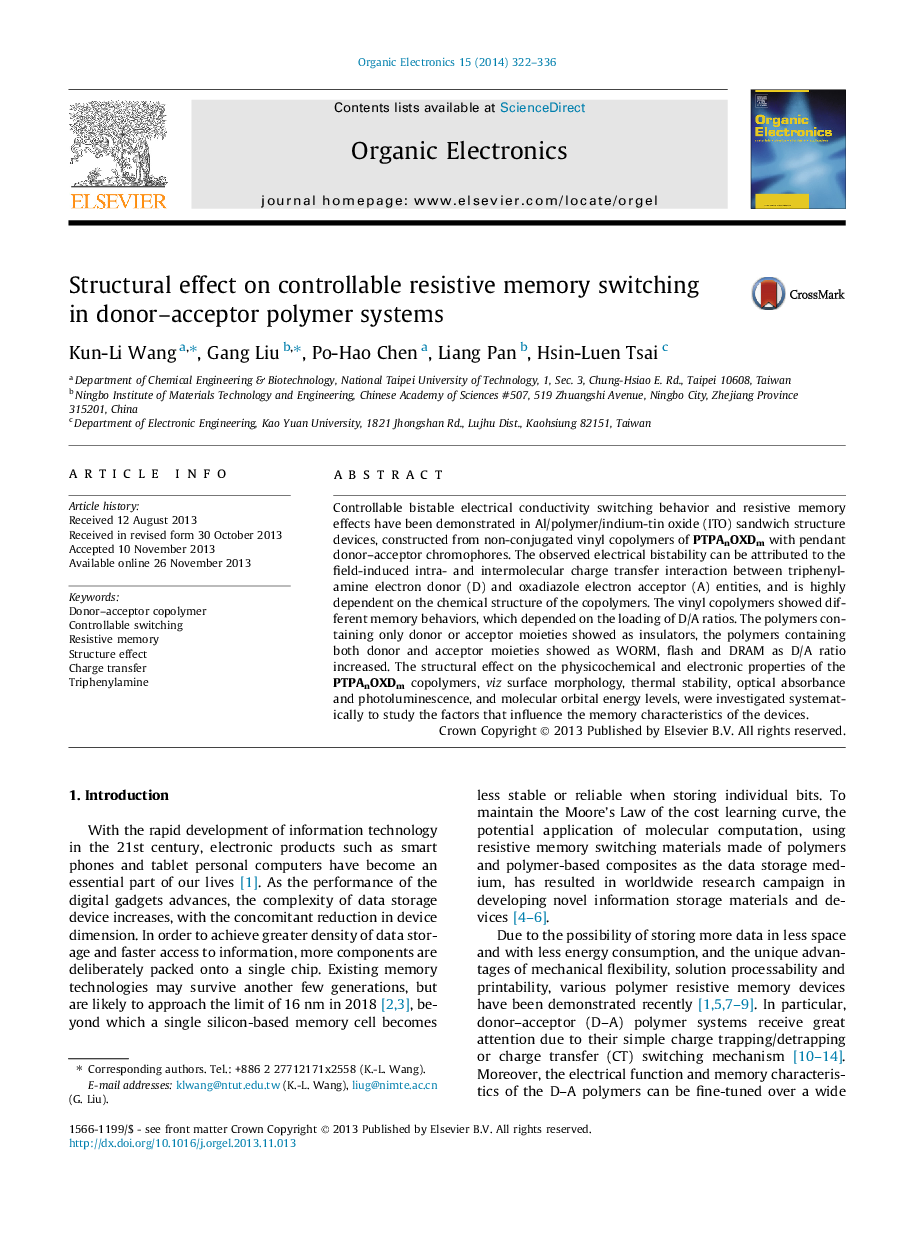| کد مقاله | کد نشریه | سال انتشار | مقاله انگلیسی | نسخه تمام متن |
|---|---|---|---|---|
| 1263888 | 972083 | 2014 | 15 صفحه PDF | دانلود رایگان |
• A series of copolymers containing different ratio of electron-donor and acceptor moieties were prepared and characterized.
• The memory behaviors of organic devices depend on the ratios of donor/acceptor in the polymers.
• All polymers blending by donor- and acceptor-homopolymers do not show memory effects.
• Controllable resistive memory switching effects have been established in donor–acceptor polymer systems.
Controllable bistable electrical conductivity switching behavior and resistive memory effects have been demonstrated in Al/polymer/indium-tin oxide (ITO) sandwich structure devices, constructed from non-conjugated vinyl copolymers of PTPAnOXDm with pendant donor–acceptor chromophores. The observed electrical bistability can be attributed to the field-induced intra- and intermolecular charge transfer interaction between triphenylamine electron donor (D) and oxadiazole electron acceptor (A) entities, and is highly dependent on the chemical structure of the copolymers. The vinyl copolymers showed different memory behaviors, which depended on the loading of D/A ratios. The polymers containing only donor or acceptor moieties showed as insulators, the polymers containing both donor and acceptor moieties showed as WORM, flash and DRAM as D/A ratio increased. The structural effect on the physicochemical and electronic properties of the PTPAnOXDm copolymers, viz surface morphology, thermal stability, optical absorbance and photoluminescence, and molecular orbital energy levels, were investigated systematically to study the factors that influence the memory characteristics of the devices.
Controllable resistive memory switching effects have been established in donor–acceptor polymer systems with triphenylamine (TPA) as the electron donor and (2,5-biphenyl)-1,3,4-oxadiazole (OXD) moiety as the acceptor. The devices fabricated from the vinyl copolymers showed as insulators, WORM, flash and DRAM memory depending on the ratios of TPA/OXD (D/A) in the polymers. The structural effects on the origin of the electrical bistability, which are arising from the intra- and intermolecular charge transfer interaction, have been investigated by exploring the chemical structure–memory characteristics relationships.Figure optionsDownload as PowerPoint slide
Journal: Organic Electronics - Volume 15, Issue 1, January 2014, Pages 322–336
